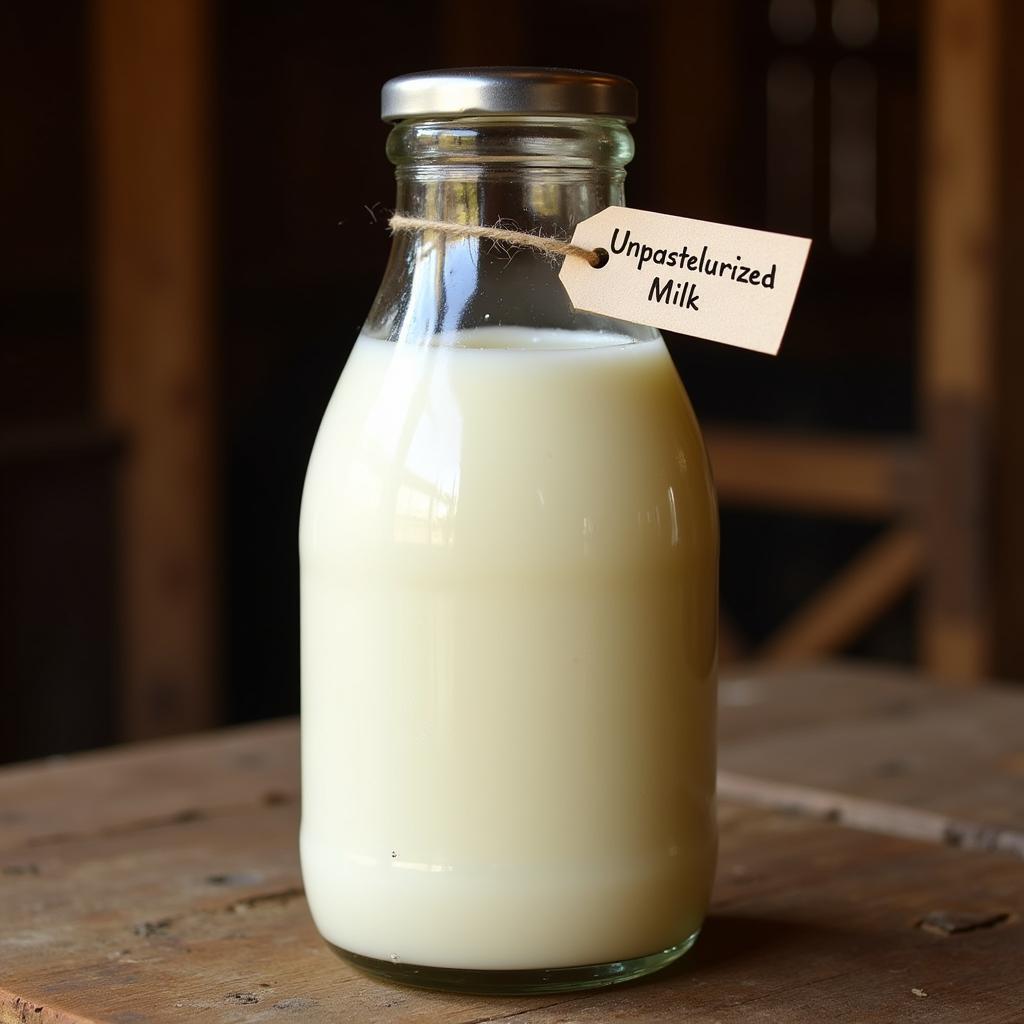Pasteurized vs. unpasteurized milk – a debate that has been ongoing for years. Choosing between these two can be confusing. This article will delve into the differences between pasteurized and unpasteurized milk, exploring their benefits and risks to help you make an informed choice.
Understanding Pasteurization
What is pasteurization? Pasteurization is a heat treatment process that eliminates harmful bacteria in milk, making it safe for consumption and extending its shelf life. This process involves heating the milk to a specific temperature for a set duration, effectively killing pathogens like Salmonella, E. coli, and Listeria.
The Benefits of Pasteurized Milk
- Safety: The primary advantage of pasteurization is enhanced safety. By eliminating disease-causing bacteria, pasteurized milk significantly reduces the risk of foodborne illnesses.
- Longer Shelf Life: Pasteurization increases the shelf life of milk, allowing it to stay fresh for longer periods. This minimizes wastage and provides convenience for consumers.
- Wide Availability: Pasteurized milk is readily available in most grocery stores, making it easily accessible to the general population.
Exploring Unpasteurized Milk (Raw Milk)
Raw milk, also known as unpasteurized milk, is milk that has not undergone the pasteurization process. While it retains all its natural components, it also carries potential health risks.
The Potential Risks of Unpasteurized Milk
- Foodborne Illness: The most significant concern with raw milk is the potential for contamination with harmful bacteria. Consuming raw milk increases the risk of contracting foodborne illnesses, particularly for vulnerable populations like children, pregnant women, and individuals with weakened immune systems.
- Variability in Quality: The quality of raw milk can vary significantly depending on the farm’s hygiene practices and the health of the cows. This inconsistency poses a challenge in ensuring consistent safety.
Perceived Benefits of Unpasteurized Milk
Some proponents of raw milk believe it offers certain health benefits, such as improved digestion and enhanced nutritional value. However, scientific evidence supporting these claims is limited and often contested.
 Unpasteurized Milk in a Bottle
Unpasteurized Milk in a Bottle
Pasteurized vs. Unpasteurized Milk: A Direct Comparison
To better understand the differences between pasteurized and unpasteurized milk, let’s compare them side-by-side.
| Feature | Pasteurized Milk | Unpasteurized Milk |
|---|---|---|
| Safety | High | Low |
| Shelf Life | Long | Short |
| Availability | Widely available | Limited availability |
| Bacterial Content | Low | High |
| Nutritional Value | Slightly altered | Preserved |
Making the Right Choice for Your Health
Ultimately, the choice between pasteurized and unpasteurized milk depends on individual preferences and risk tolerance. While raw milk may appeal to some for its perceived naturalness, pasteurized milk offers a significantly safer option with readily available access.
Conclusion
Pasteurized and unpasteurized milk offer distinct characteristics. While pasteurization enhances safety and shelf life, raw milk maintains its natural components but carries inherent risks. By understanding these differences, you can make an informed decision that prioritizes your health and dietary needs. Consider the safety and availability of pasteurized vs. unpasteurized milk when making your choice.
FAQ
- Is raw milk healthier than pasteurized milk?
- What are the risks of drinking raw milk?
- Where can I buy unpasteurized milk?
- How long does pasteurized milk last?
- Can I pasteurize raw milk at home?
- Are there any regulations on selling raw milk?
- What are the symptoms of foodborne illness from raw milk?
Need More Help?
For further assistance or inquiries regarding pasteurized vs. unpasteurized milk, please contact us.
Số Điện Thoại: 0372999888
Email: [email protected]
Địa chỉ: 236 Cầu Giấy, Hà Nội.
We have a 24/7 customer support team ready to assist you.